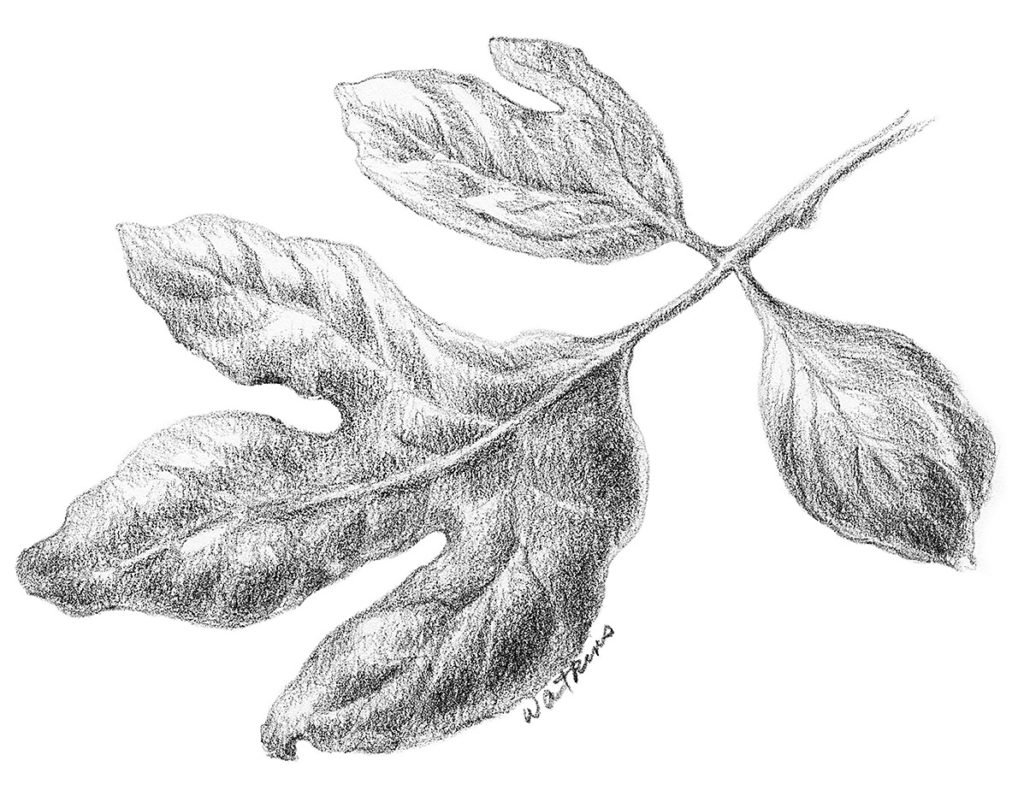May, Spring Remedies
By Leslie Watkins
Root beer anyone? Not the sweet, syrupy concoction found on the grocery shelf, but the real deal a tonic made from the roots and bark of wild-sourced medicinals designed to kick start your engine in the spring. The herbal drink was traditionally made with sassafras by indigenous peoples of the Americas. Europeans arriving in North America in the 16th century altered the recipe over the years to include soda, sugar, sarsaparilla and other ingredients.
Old recipes for root beer usually contain a mixture of bitter roots with aromatic herbs customized for the benefit of the individual. The aromatic oil safrole gives root beer its distinctive flavor. The oil is extracted from the sassafras tree and was once used in chewing gum, toothpaste and soaps. Studies found it to be carcinogenic at high doses in rats and it was banned by the FDA in 1960. It is found in cinnamon, nutmeg, black pepper and in basil. Many people consider it safe and beneficial when used in moderation.

Long before the conveniences of local supermarkets and having fresh vegetables trucked in from warmer climates, folks depended on wild-foraged greens to strengthen and invigorate their bodies after a long winter of heavy, starchy foods stored in root cellars. Early spring greens help to stimulate our circulatory and digestive systems and supercharge us with much needed vitamins and minerals. Many of these wild foods contain far more vitamins A, C and calcium than what is commonly found in the produce aisle. Super nutritious and antioxidant rich spring greens like plantain, purslane, dandelion and the flowers from red clover may be added to salads. The “sting” from stinging nettles is removed by steaming, and they make wonderful raviolis when served with sage butter. Tough roots like sassafras, dandelion and burdock can be chopped, boiled and strained for an earthy, cleansing tonic. You can make a healthful tea from red clover simply by pouring hot water over the flowers and letting it steep for a little while.
As an added bonus we can “weed” as we forage. The invasive garlic mustard, Alliaria petiolata, brought to America by early settlers as a vegetable, is delicious sautéed with chopped garlic and olive oil. And it packs a lot of nutrition. It has substantial amounts of vitamins A, C, E and some of the B vitamins, also potassium, calcium, magnesium, selenium, copper, iron and manganese as well as omega-3 fatty acids. All parts are edible and taste best in spring. Medicinally, it was once used to treat ulcers and gangrene, it thins the blood and lowers cholesterol. Use it in soup, salads and in pesto.
Garlic Mustard Pesto Recipe
3 tbsp. garlic mustard roots
1 cup garlic mustard leaves
3/4 cups fresh parsley
1 cup fresh basil
4 garlic cloves
2 cups of walnuts or pine nuts
Olive oil
Place the garlic mustard roots and garlic cloves into a food processor and chop fine. Add parsley, garlic mustard leaves and basil. Finally add the nuts and olive oil to make a paste. Use it on pasta, sandwiches and in vegetable dishes.
Spring Tonic Ingredients
- Broadleaf Plantain, Plantago spp.
- Burdock, Arctium lappa
- Dandelion, Taraxacum officinale
- Lamb’s-quarters, Chenopodium album
- Mustard Greens, Brassica species
- Purslane, Portulaca oleracea
- Red Clover, Trifolium pratense
- Stinging Nettles, Urtica dioica
- Violets, Viola canadensis
- Yellow Dock, Rumex crispus
